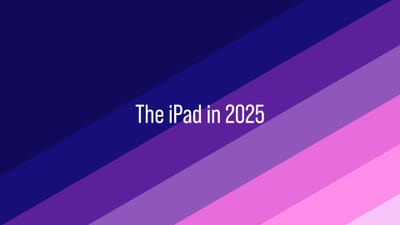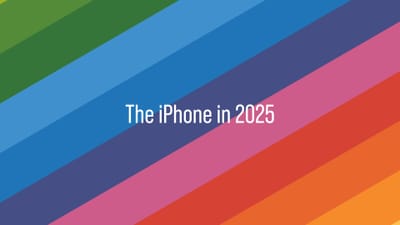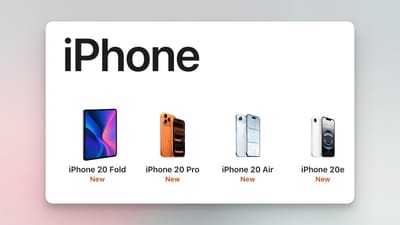With the folding iPhone be two Airs smashed together?
There has been no shortage of theorizing that the iPhone Air isn't so much a long term phone in the lineup, but a bit of a practice session for Apple to try out their new folding phone form factor in the wild before releasing the real thing next year. Who knows what'll happen exactly, but I wanted to consider how Apple's foldable would stack up compared to some other notable foldables on the market.
Google's Pixel 10 Pro Fold, a pretty thick foldable for 2025, is 5.2 mm thick when unfolded and 10.8 mm when folded in half.
Samsung's Galaxy Z Fold 7, the most mainstream foldable in the US, is 4.2 mm thick when unfolded, and 8.9 mm when folded up.
The Oppo Find N5 was the thinnest folding phone on the market when it was revealed, but it's exactly the same as the Galaxy Z Fold 7 at 4.2 and 8.9 mm.
The iPhone Air is 5.6 mm thick, so a foldable with two of them would be around 12 mm thick, given the other foldables are about 10-20% thicker than double their unfolded depth.
It will be curious to see what happens, but I gotta say, it really would be something if Apple jumps into the folding phone game with the thickest mainstream folding phone on the market. I'm not saying that would be the worst thing in the world, but it would be interesting to see how the Apple punditry reacts to a phone like this, given they've spent the last 5+ years saying folding phones fundamentally don't work because they're too thick when folded up.
If you were curious, a 12 mm thick iPhone would be the 3rd thickest iPhone ever, behind only the 3G and 3GS, both of which were 12.3 mm. By comparison, the iPhone 17 Pro and 17 Pro Max are 8.75 mm thick, which are almost identical to the 8.9 mm of the Samsung Fold.
Time will tell, but given the above numbers, I'm a bit skeptical that the folding iPhone will effectively be two Airs on a hinge. If anything, the body should get even thinner than the Air to better align with the current expectations in the market for how thin a folding phone can be.


